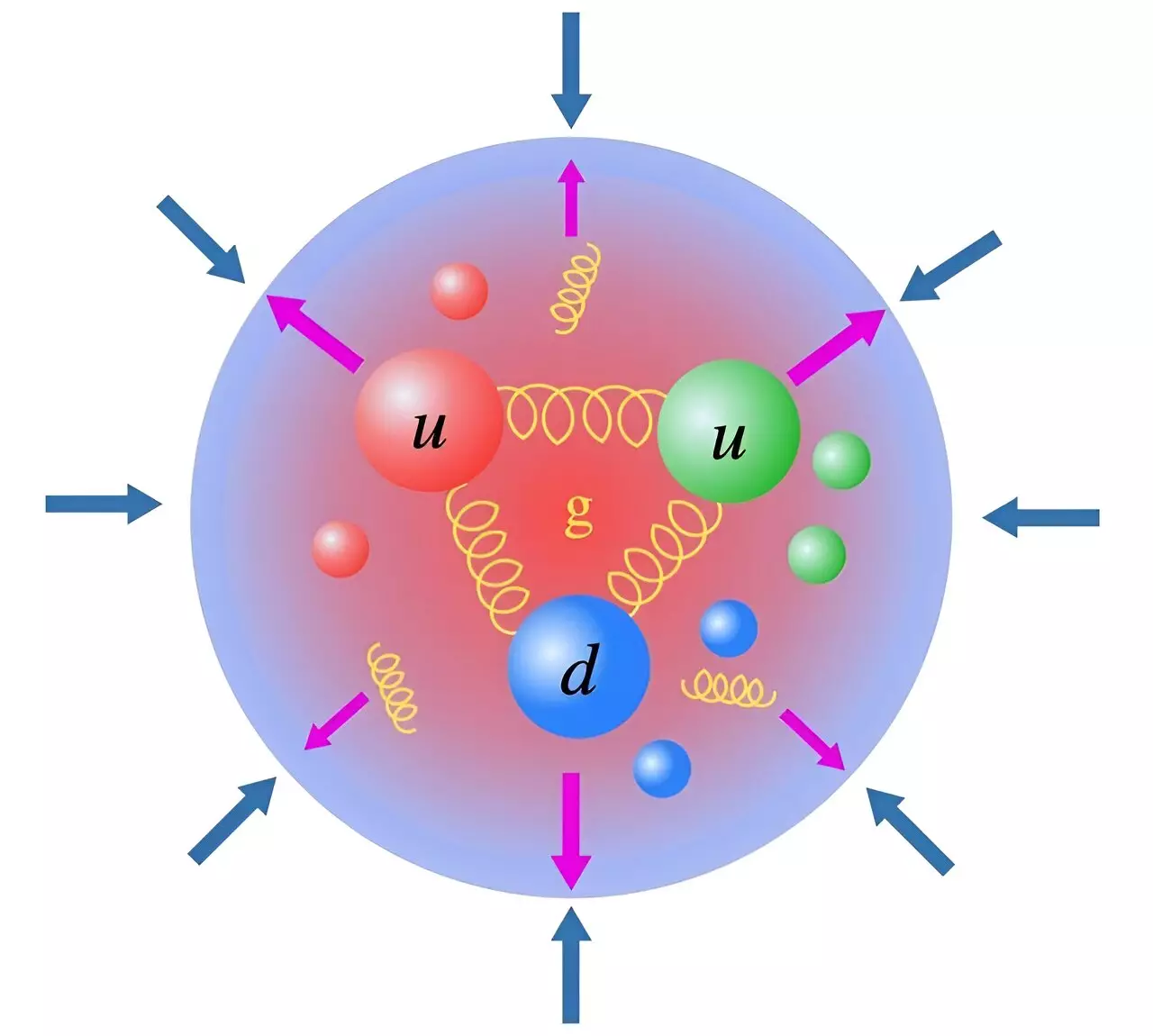Quantum chromodynamics (QCD) serves as the theoretical foundation for exploring the interactions within atomic nuclei and the particles that make them up. One key aspect of QCD research involves delving into the containment of quarks and gluons within nucleons such as protons and neutrons. The forces acting inside nucleons are often likened to the gravitational force, yet there are quantum effects, like the “trace anomaly,” that deviate from this norm and play a crucial role in nucleon dynamics.
Recent studies have highlighted the significance of the trace anomaly in understanding the balance between the internal pressure of nucleons and the cohesive forces that bind them together. Researchers have successfully measured the trace anomaly by observing the production of charmonium particles, a type of subatomic particle generated at research facilities like the Thomas Jefferson National Laboratory and the Electron Ion Collider. By combining experimental data with theoretical calculations based on QCD, scientists aim to gain deeper insights into the distribution of mass and pressure within hadrons.
The study of trace anomaly not only sheds light on the intricacies of particle interactions at the subatomic level but also draws parallels with phenomena observed in other realms of physics. The confinement of particles within hadrons and superconductors, for instance, can be mathematically described using a similar framework. This concept mirrors the way the cosmological constant and dark energy influence energy and pressure dynamics in the equations that govern the universe’s expansion and acceleration. By measuring the trace anomaly both experimentally and through lattice QCD calculations, researchers can gain valuable insights into the workings of quantum chromodynamics and its impact on physical systems ranging from the minuscule to the cosmic scale.
The exploration of quantum chromodynamics, particularly the trace anomaly, offers a comprehensive understanding of how energy, pressure, and confinement manifest across different physical systems. By bridging the gap between microscopic particle interactions and cosmic-scale phenomena, scientists can derive a unified perspective on the diverse aspects of physics, unveiling the intricate connections that underpin the fabric of the universe.


Leave a Reply